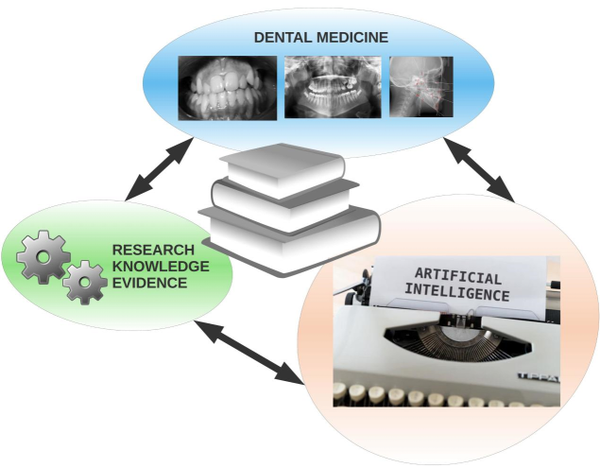-
Home
-
About JCTR
-
Gold Open Access
-
Issues
-
Editorial board
-
Author guidelines
-
Publication fees
-
Online first
-
Special issues
-
News
-
Publication ethics
-
Partners
-
Submit your manuscript
-
Submit your review report
-
Editorial Office
-

This work is licensed under a Creative Commons Attribution-NonCommercial 4.0 International License. ISSN print: 2382-6533 ISSN online: 2424-810X
Volume 7 issue 4
Scope and challenges of machine learning-based diagnosis and prognosis in clinical dentistry: A literature review
Lilian Toledo Reyes, Jessica Klöckner Knorst, Fernanda Ruffo Ortiz, Thiago Machado Ardenghi*
Reyes et al. J Clin Transl Res 2021; 7(4):12
Published online: July 30, 2021
Abstract
Background: Machine learning has emerged as a branch of artificial intelligence dealing with the analysis of large amounts of data. The applications of machine learning algorithms have also expanded to health care, including Dentistry. Recent advances in this field point to future improvements in diagnostic techniques and the prognosis of various diseases of the teeth and other maxillofacial structures.
Aim: The aim of this literature review is to describe the basis for machine learning being applied to different dental sub-fields in recent years, to identify typical algorithms used in the studies, and to summarize the scope and challenges of using these techniques in dental clinical practice.
Relevance for patients: The proficiency of emerging technologies that have begun to show encouraging results in the diagnosis and prognosis of oral diseases can improve the precision in the selection of treatment for patients. It is necessary to understand the challenges associated with using these tools in order to effectively use them in dental services and ensure a higher quality of care for patients.

DOI: http://dx.doi.org/10.18053/jctres.07.202104.012
Author affilation
Department of Stomatology, School of Dentistry, Federal University of Santa Maria, Santa Maria, Brazil
*Corresponding author
Thiago Machado Ardenghi
Faculdade de Odontologia da Universidade Federal de Santa Maria, Av. Roraima, 1000, Cidade Universitária - 26F, Departamento de Estomatologia, 97015-372, Santa Maria, RS, Brasil.
Tel - Fax: +55.55. 3220-9272.
Email: thiardenghi@hotmail.com
Handling editor:
Michal Heger
Department of Pharmaceutics, Utrecht University, the Netherlands
Department of Pharmaceutics, Jiaxing University Medical College, Zhejiang, China

